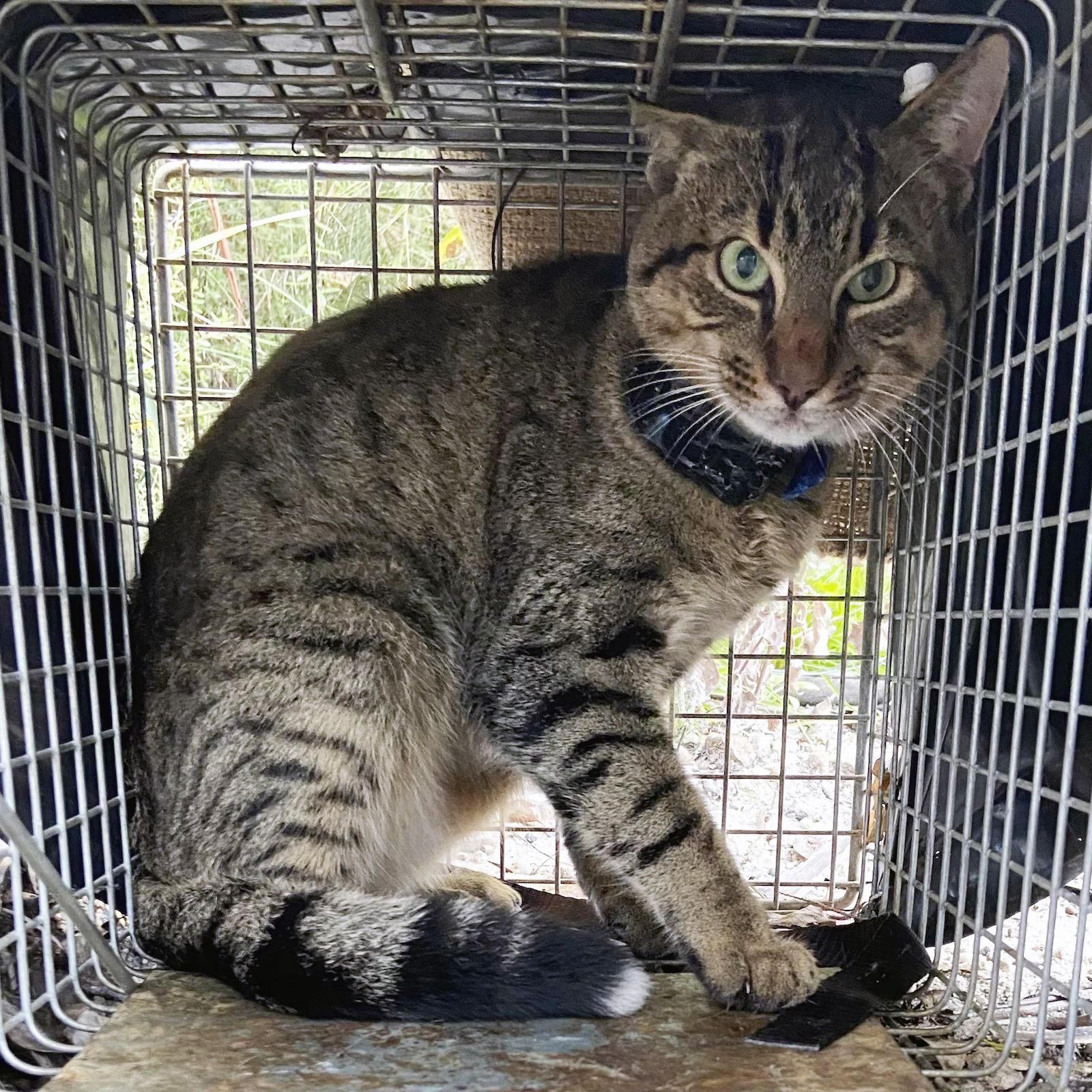29 November 2022
Management programs to effectively reduce feral cat impacts are sorely needed but land managers often lack clear guidance on designing and implementing best-practice management programs in their local contexts.

Feral cat in a cage trap. Photo: Guy Ballard.
Hub project Best-practice management of feral cats and red foxes, led by Dr Annalie Dorph and Associate Professor Guy Ballard from the University of New England, is working with experts to determine best-practice management for cats and foxes and identify research to address knowledge gaps to improve the future management of these invasive species.
We brought together feral cat experts from across Australia who assessed the effectiveness of 10 management techniques across a range of ecoregions. For control at large scales, baiting emerged as the most effective technique for reducing feral cat numbers. However, at smaller scales in certain ecoregions, more socially acceptable methods of control may also be effective. These include tracking with detector dogs or modifying resources – for example, controlling rabbit populations to reduce prey availability. This valuable information will be used to develop an integrated management decision tool for land managers.
Experts also identified and prioritised key research gaps. They agreed the most pressing research needs are developing effective monitoring, understanding cat impacts on prey species, measuring how long management benefits last, quantifying cat population exchange between urban and natural areas, and finding ways to prioritise sites for attempted eradication.
Read more in the workshop report.
Want to know more about the Resilient Landscapes Hub's activities and our research into practical solutions to environmental problems? Stay informed about activities, research, publications, events and more through the Hub newsletter.
"*" indicates required fields